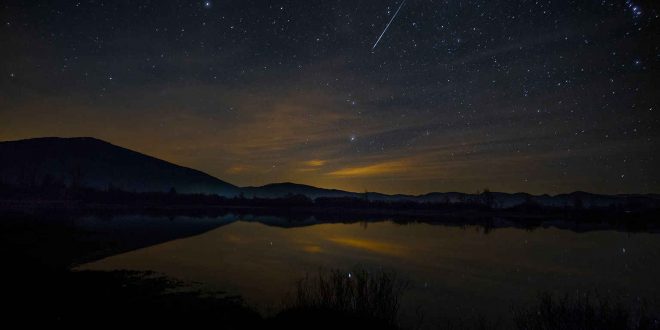Towards the middle of November, between the 11-12, the Taruids meteor shower intensifies in strength, due to the combining of the North and South Taurids Meteor Shower.
Unlike its more famous cousins — the Perseids, Orionids and Leonids — the Taurids don’t typically have nearly as many meteors to look at.
So why should we look? Because some Taurids are more than just meteors. Some are called fireballs, which are brighter and more spectacular.
Like our other annual meteor showers, the Taurids are named for the constellation nearest where they originate from in the sky. In this case, they are seen near Taurus the Bull in the eastern sky, just to the right of the more familiar constellation, Orion the Hunter, which I have depicted in the graphic above.
Periodically through the year, Earth passes through the debris trail left behind when a comet flies through the inner solar system. In this case, there are two different streams that we’ll pass through Friday and Saturday nights. So there’s the chance to see some Taurids both midevening, and in the middle of the night on both nights.
Enhancing our chances this year is that the moon sets early. No moonlight means a darker sky, and skies should be clear.
Even though we may only see five to 10 meteors an hour, if we get just one of those Taurid fireballs, it’ll be well worth the wait. Good luck.
How to get the best view
Meteor showers require no special equipment to view. Just travel to an area that has few lights, away from major cities. Get comfortable on your back, staring straight up at the sky. This will let you view more meteors than by staring in one direction.
Agencies/Canadajournal
 Canada Journal – News of the World Articles and videos to bring you the biggest Canadian news stories from across the country every day
Canada Journal – News of the World Articles and videos to bring you the biggest Canadian news stories from across the country every day



